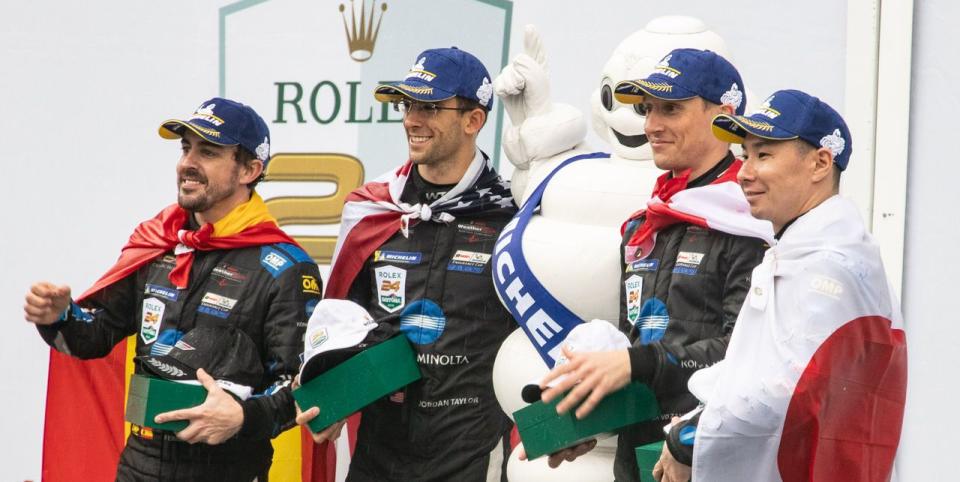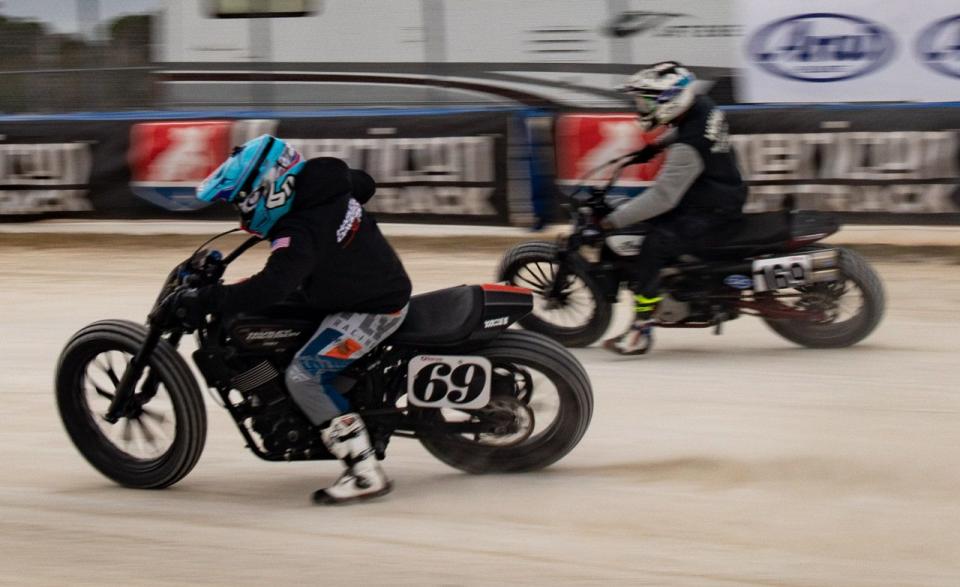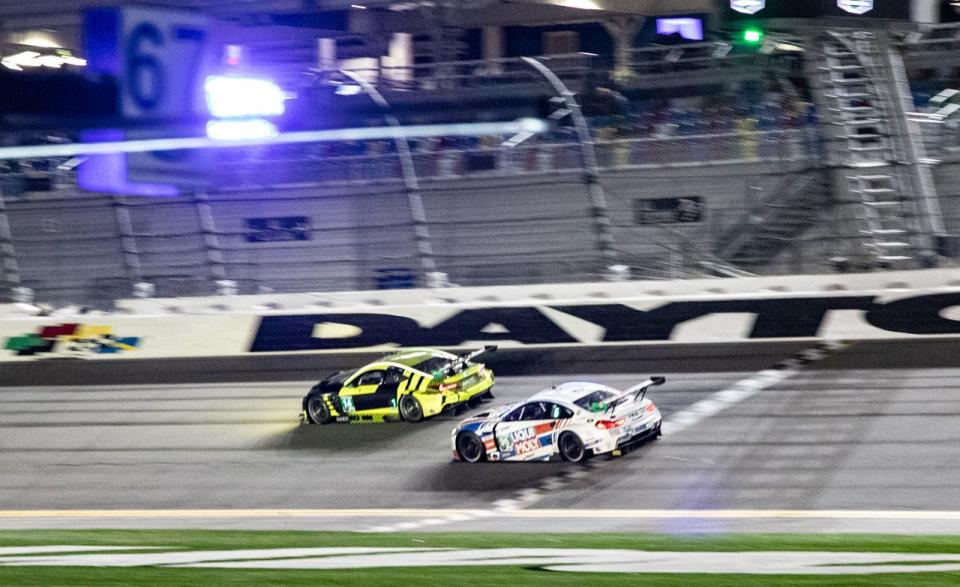The Daytona Speedway Is One of My Happy Spaces

"Weird. It's really weird." Scott Pruett was talking about his first time being at Daytona since his retirement. But he could just as easily have been talking about the place itself. It's easy to laugh at Daytona. Drive around town and you're bound to catch Florida Man out and about, in all his gaudy trashiness. Never, perhaps, has there been a grungier town with more fancy European luxury items named for it. And in fact, Daytona Beach itself is named for that notable Ohio mecca of luxury, Dayton. But the town's relationship with velocity dates back to the early days of land speed records, made on the hard-packed oceanfront sands, and the Daytona International Speedway dominates the modern city. It also owns the early part of any given year's motorsport calendar, kicking off with January's Rolex 24 endurance race, followed by the action surrounding the Daytona 500, and finishing up with a variety of motorcycle races during Bike Week in March.
Pruett has won the 24-hour endurance race here five times-a feat matched only by Hurley Haywood-and served as this year's Grand Marshal, taking home what I think might be the nicest of his collection of Rolex Daytona Cosmographs for his trouble. Ironically, he got the new watch for what was undoubtedly the easiest day of work he's ever put in at the speedway. It features a white dial and a black Cerachrom bezel, and while my inner watch nerd doesn't normally get superheated about Daytonas, I'd dare anybody with much more than a passing interest in horology and motorsport not to stand in awe when faced with his collection. A Daytona on its own is a nice watch. A Daytona won at Daytona is another thing entirely.

Pruett was gracious enough to host a Q&A session where he passed the watches around to a fortunate few of us. In an era when it's easy to be jaded by spectacle and very expensive things (especially when it's one's job to cover both spectacles and very expensive things), time with Pruett's collection was a memory that'll stick with me.
The race itself turned into a slip 'n' slide fiasco after the rains arrived in the predawn darkness. Perhaps my favorite single moment in all of motorsport is standing at the end of the grandstand and watching the endurance racers come out of the banking and onto the tri-oval as the sun rises. There's a stillness punctuated by great effort. Which is a piss-poor description of the collision of natural beauty and mechanized sport. Rather than do it further injustice, I'd strongly encourage you to go experience it for yourself.
A few days after the 24, I was back at Daytona for an American Flat Track press event. During an extreme nic fit, I'd easily walk a mile for a Camel, but I'll happily travel hours to go ride flat track for a bit. I'd ridden little TTR-125s at both American Supercamp and Rich Oliver's Mystery School, and Harley-Davidson's XG750R AFT Twins-class race bike at a little bullring down in Lodi, but I'd never ridden an AFT Singles bike before. While the small bikes are practically idiotproof and the big ones are purpose built for the unique body position demanded of flat-track racers, Singles bikes are converted motocrossers. In some ways, I felt more freaked out on the big 450-cc KTM that Johnny Lewis of Moto Anatomy had brought along than I had on the heavier, more powerful Harley.

We rode on the dusty oval the flat-track bikes had used previously. These days, they're running out on what's currently the beautifully manicured grass strip inside the tri-oval. Their TT course-flat-track terminology for a circuit that includes right turns and perhaps a jump-is built first, using AFT's proprietary blend of dirt, which is stored for reuse every year. The Supercross track is constructed atop that, then removed so the flat-trackers can run.
At the end of the day, I felt like I had more to learn about riding flat track than perhaps any time since I started doing it. The Harley I'd ridden was so beyond my sideways-skill level that I barely tapped into its potential. I knew I could be much faster on a small bike, but the big KTM single bridged the gulf in a way that made me understand just how much faster everything could be.
I had the same experience during my final lap of the Daytona road course in a Ferrari 488 a few years ago. Perhaps it's a function of this place. For all of the corporate hoo-ha and the speedway's recent zillion-dollar makeover, at its heart it is a place where people come to go fast and to figure out how to go faster.
Owing to the heavy rain at the Rolex 24, I'd skipped my planned sunrise-grandstand moment and slept in. As it turned out, I would've been better off watching more night racing and skipping the day entirely, though watching Turn 1 become a proverbial banana peel for a succession of cars was a spot of comical fun.

For the first time in its history, the 24 ended under a red flag, just before the 22nd hour. Having covered 593 laps when the race was stopped, Wayne Taylor Racing's Fernando Alonso, Kamui Kobayashi, Jordan Taylor, and Roger van der Zande took home the coveted Rolexes. Soaked from the victory-lane ceremony, I ran into Wayne Taylor in the men's room, because where else would I run into Wayne Taylor?
He had the look of a man who'd miraculously survived his own execution. I asked him how it felt.
"It was hell."
"What was the worst part?"
"Just the last two hours."
Sometimes that old quote from Le Mans isn't true. Sometimes, racing isn't life. Sometimes, racing is just waiting, too. But leave it to Daytona to subvert an endurance-racing maxim. It is, after all, a little weird here.
('You Might Also Like',)

 Yahoo Autos
Yahoo Autos 